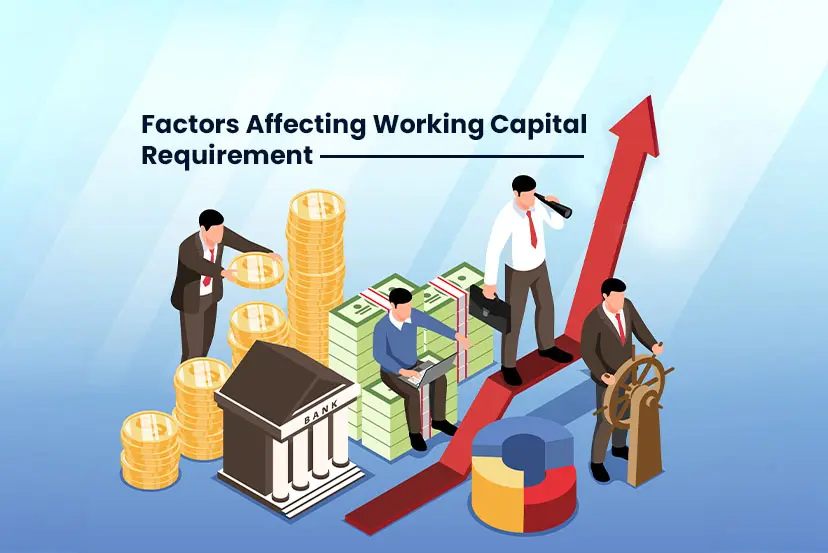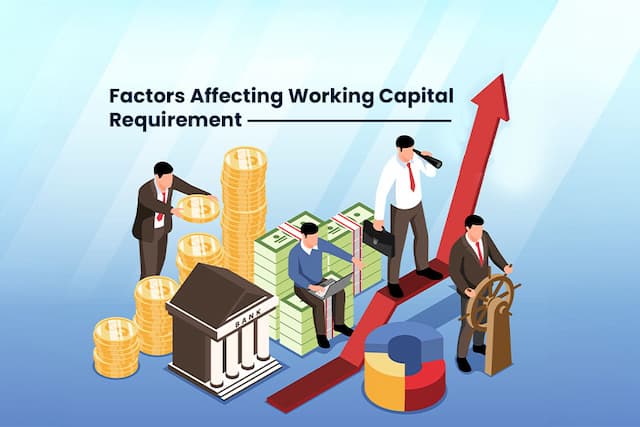Working capital management is the indicator of the company’s ability to meet short-term financial commitments and to operate the business on a day-to-day basis. Knowing the different components that will make up a business’s working capital requirements will help companies not only plan and manage working capital better, but also help to support cash flow and consequently minimize the risk of cash flow shortages. This guide will look at the key components that impact working capital requirements.
Understanding Working Capital and Its Importance
Working Capital is the difference between current assets and current liabilities. It is the oil that keeps the engine of the business running while it pays its suppliers, has daily operational expenses, as well as the consumption of the working capital cycle across the business.
Managing working capital well can reduce the cash conversion cycle, or the time from when you pay suppliers to when you collect from customers. Having too little working capital or too much working capital may hinder sales or unduly stress the working capital cycle.
Key Factors Affecting Working Capital Requirement
There are many internal and external factors that influence the need for working capital volume and timing. If systematic, management can control working capital to meet the firm’s business needs and maximize financial efficiency. Here are the key factors influencing the working capital:
1. Size of the Business
The scale and size of a business influence its working capital needs. Larger businesses typically need more working capital for these reasons:
- Larger inventories to facilitate mass production.
- More accounts receivable from larger customer bases.
- More accounts payable from greater supplier transactions.
Smaller companies have relatively lower working capital requirements. The impact of business size on working capital can also directly correlate to bargaining power and economies of scale that can influence cash flow efficiencies.
2. Nature of the Business
The nature of business greatly impacts working capital:
- Manufacturing Companies: They have a large working capital requirement due to their investment in raw materials and intermediate goods, along with a finished goods inventory that they must hold before selling.
- Trading Companies: Generally have a moderate working capital requirement because they mainly have to manage inventory and receivables, but generally have shorter operating cycles overall.
- Service Companies: These companies have the least working capital requirement because they typically never hold inventory and receive payments quickly.
3. Operating Cycle or Working Capital Cycle
An operating cycle is the period in which raw materials are turned into goods or services, selling them, and receiving payment from the customer. If it is longer, it will require more working capital to fund the relationships through the working capital cycle. For example, a textile producer that has 120 days in its operating cycle will be financing more cash in inventory and accounts receivable than a retailer that has a 30-day operating cycle.
4. Seasonality of Business
A fluctuating season is one of the seasonal factors affecting working capital. Enterprises that experience peak seasons must stockpile inventory and often provide long payment terms, which temporarily increases working capital requirements. In the off-season, the demand for working capital is usually at a lower level than sufficient, as both production and sales are also very low.
5. Credit Policy Impact
The credit policy of a firm, considering both its credit terms for customers and the credit terms it receives from its suppliers, affects working capital:
- Offering customers longer credit periods will increase receivables and working capital.
- Getting vendors to offer more extended credit will reduce cash outflows, reducing working capital.
- Strict credit control can reduce inventory and receivables, facilitating better capital efficiency, but may also limit sales potential.
6. Scale of Operations
As firms scale, more working capital will be necessary to accommodate the increases in procurement, production, inventories, and receivables. On a greater scale, larger transactions/cash flow management require more working capital to maintain the management of day-to-day business operations. In many cases, scaling operations will require foreign investment or coordinated suppliers, which only increases the working capital requirements.
7. Inventory Management Practices
Having inventory uses cash and creates a higher working capital requirement. Proper inventory management practices can help businesses limit unnecessary stocks on hand to free cash. If businesses can see their inventory levels close to their actual sales and production requirements, holding funds can be reduced, and liquidity can be increased.
8. Business Growth and Expansion Plans
A business that is growing rapidly may have increased working capital needs to fund additional raw material purchasing, hiring of additional labor, and increased marketing spending. If working capital management is not done effectively during these periods, the business may suffer from operational bottlenecks and ultimately lose growth opportunities.
9. Technology and Production Cycle
Production technology affects labor and inventory costs:
- Labor-intensive methods typically use greater amounts of working capital to set aside for wages and raw materials.
- Automated or capital-intensive production methods may decrease working capital but increase fixed costs.
If the production cycle is longer, then the funds are tied up in work-in-progress inventory for longer, so the needs for working capital also increase.
10. Economic and Market Conditions
Macroeconomic elements, including inflation, interest rates, and economic cycles, are also working capital factors:
- Inflation raises raw materials and operating costs, which may increase working capital requirements.
- Economic booms may require more inventory and receivables; economic downturns usually reduce working capital requirements.
Credlix: Empowering Smarter Working Capital Management
Credlix provides innovative digital supply chain finance solutions to help exporters and businesses become more sustainable, advanced, and dynamic working capital management in real-time. With everything from fast invoice and receivable financing to automated documentation and flexible supply chain finance, Credlix allows businesses to:
- Decrease your working capital cycle.
- Increase liquidity while not impacting additional collateral.
- Get live visibility with simple dashboards.
- Get expert help for your compliance and export process.
Managing Working Capital Smartly
Understanding one’s specific working capital requirements and multiple factors can help businesses apply the best mechanism to manage cash flow, decrease financing costs, and improve profitability. Seeking to work with knowledgeable businesses, such as Credlix, can help leverage working capital from a constraint to a systematic advantage. This enables businesses to achieve success amid an increasingly globalized marketplace.
Struggling with cash flow gaps? Credlix helps SMEs and exporters manage working capital with flexible financing solutions. Don’t let delayed payments affect growth. [Apply for Working Capital Finance]
Frequently Asked Questions
Q1: What is working capital?
It is the funds needed to run your day-to-day operations that allow a company to meet any short-term obligations during everyday operation and keep its day-to-day operations running as smoothly as possible.
Q2: Why do seasonal businesses need working capital?
Seasonal businesses face periods of demand fluctuating to the point where they increase the amount of inventory to buy, and in many cases will extend more credit to customers in peak periods, creating a temporary cash tie-up.
Q3: How does your business size affect working capital?
Typically, a business will have a greater working capital requirement depending on the size of the firm. The larger the firm, the more inventory, accounts receivable, and accounts payable, and the greater the degree of complexity in the operations.





